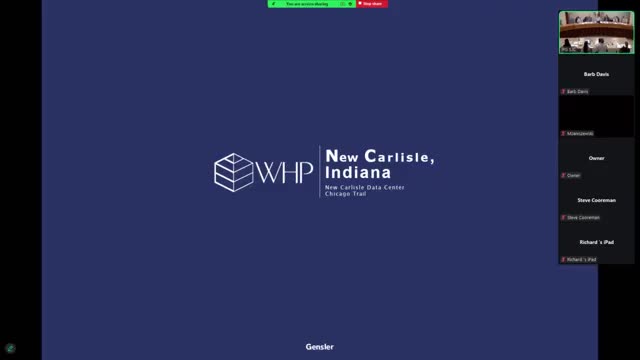Developer Proposes $12B Data Center Plan in Saint Joseph County with Extensive Buffers
September 17, 2025 | St. Joseph County, Indiana
This article was created by AI summarizing key points discussed. AI makes mistakes, so for full details and context, please refer to the video of the full meeting. Please report any errors so we can fix them. Report an error »

In a recent government meeting held on September 17, 2025, in St. Joseph County, Indiana, discussions centered around a proposed data center project that has sparked significant interest and concern among local residents and officials. The meeting highlighted the rights of property owners to request rezoning and additional considerations for their properties, a principle that has historically been favored in Indiana.
The proposed data center, which is set to occupy approximately 1,000 acres, aims to differentiate itself from an existing data center project in New Carlisle by emphasizing its design and impact on the community. The developer, representing the Saporsky family and other property owners, presented plans that include a phased approach to development, with the first phase alone projected to bring a $7 billion investment to the county.
Key features of the project include a significant buffer zone, with the closest building set to be 500 feet from Chicago Trail, far exceeding the county's standard setback requirement of 50 feet. This design aims to minimize visual and environmental impacts, with plans for green areas and agricultural heritage zones to preserve the rural character of the landscape.
The project is structured in two phases, with a total investment of $12 billion anticipated, which would surpass the largest recorded investment in Indiana's history. The second phase is expected to add six more buildings, bringing the total to 14, while still maintaining a focus on agricultural land use and community integration.
Concerns were raised about the potential similarities between the new data center and the existing one in New Carlisle, particularly regarding noise and other inconveniences. However, the developer assured that the two projects would have distinct impacts and that they are committed to working with local authorities to address community concerns.
As the meeting concluded, the commission was left to weigh the benefits of substantial economic investment against the potential disruptions to the local community. The outcome of this proposal could set a precedent for future developments in St. Joseph County, highlighting the ongoing balance between property rights, economic growth, and community well-being.
The proposed data center, which is set to occupy approximately 1,000 acres, aims to differentiate itself from an existing data center project in New Carlisle by emphasizing its design and impact on the community. The developer, representing the Saporsky family and other property owners, presented plans that include a phased approach to development, with the first phase alone projected to bring a $7 billion investment to the county.
Key features of the project include a significant buffer zone, with the closest building set to be 500 feet from Chicago Trail, far exceeding the county's standard setback requirement of 50 feet. This design aims to minimize visual and environmental impacts, with plans for green areas and agricultural heritage zones to preserve the rural character of the landscape.
The project is structured in two phases, with a total investment of $12 billion anticipated, which would surpass the largest recorded investment in Indiana's history. The second phase is expected to add six more buildings, bringing the total to 14, while still maintaining a focus on agricultural land use and community integration.
Concerns were raised about the potential similarities between the new data center and the existing one in New Carlisle, particularly regarding noise and other inconveniences. However, the developer assured that the two projects would have distinct impacts and that they are committed to working with local authorities to address community concerns.
As the meeting concluded, the commission was left to weigh the benefits of substantial economic investment against the potential disruptions to the local community. The outcome of this proposal could set a precedent for future developments in St. Joseph County, highlighting the ongoing balance between property rights, economic growth, and community well-being.
View full meeting
This article is based on a recent meeting—watch the full video and explore the complete transcript for deeper insights into the discussion.
View full meeting
